Your Birth Month Has a Fruit Tree! Find Yours & Plant It This Fall for a Sweet Harvest
What delicious fruit does your birth month have in store for you? Find out what your fruit tree is and get growing!
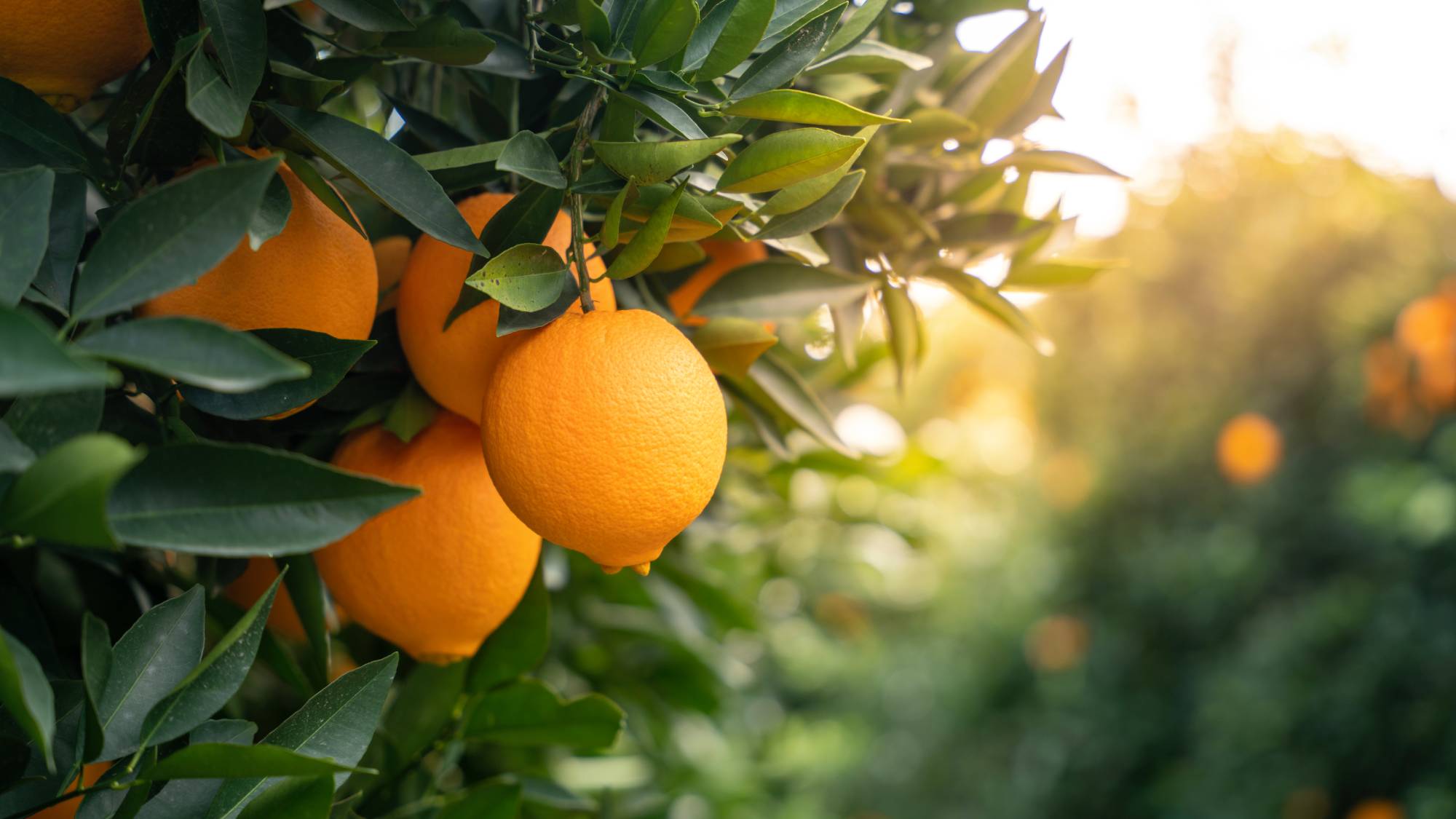

Here’s a great way to celebrate your birthday! Plant a fruit tree that flowers or fruits during your birth month. Whether you’re a January baby or blow out the candles in November, we’ve got a perfect birthday fruit tree for you.
Fruit trees are among the most ornamental garden trees, offering showy blossoms in one season, and a delicious harvest in another. You don’t need a 40-acre landscape to get started. Many fruit trees are small enough to grow in a large container on a patio or fit into a garden corner.
Here are our top options for every month of the year. Those with large yards might consider adding all 12 of these fruit trees to the landscape for natural beauty and delicious fruit all year long.
January: Meyer Lemon
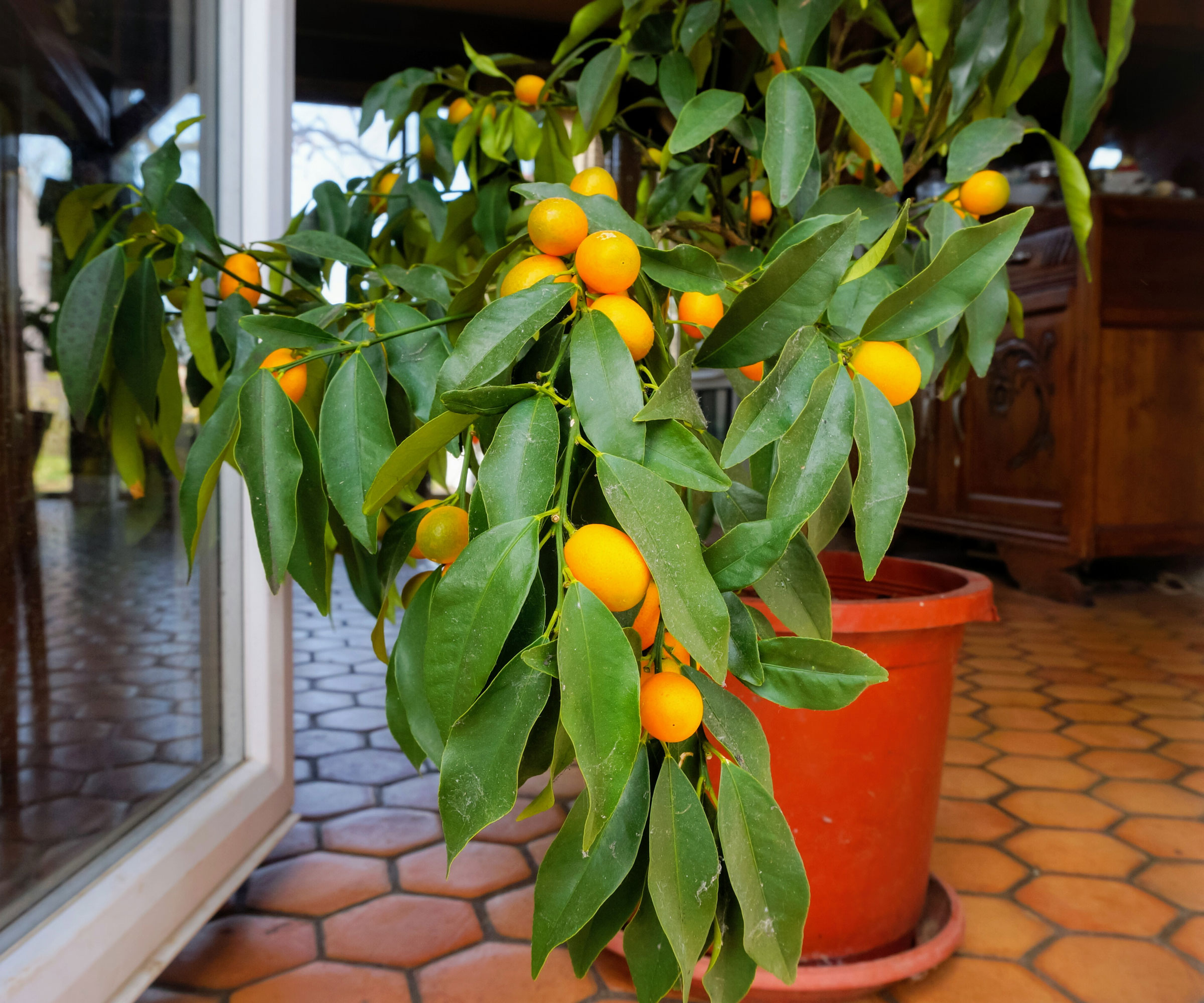
I love my Meyer lemon tree (Citrus × meyeri). These little citrus evergreens are hybrids, a cross between a lemon tree and a mandarin orange. They are compact and attractive, with shiny dark leaves and extremely fragrant white flowers. The fruit is deep yellow like a lemon but rounder and sweeter.
Meyer lemon is a great tree in January, since it is at its peak harvest season. You’ll have both blossoms and fruit on the tree as the new year begins. While the tree is only hardy in USDA zones 9-11, you can grow it in a pot in cooler zones and bring it indoors in the winter.
Find the perfect Meyer lemon tree from Fast Growing Trees.
February: Japanese Flowering Apricot
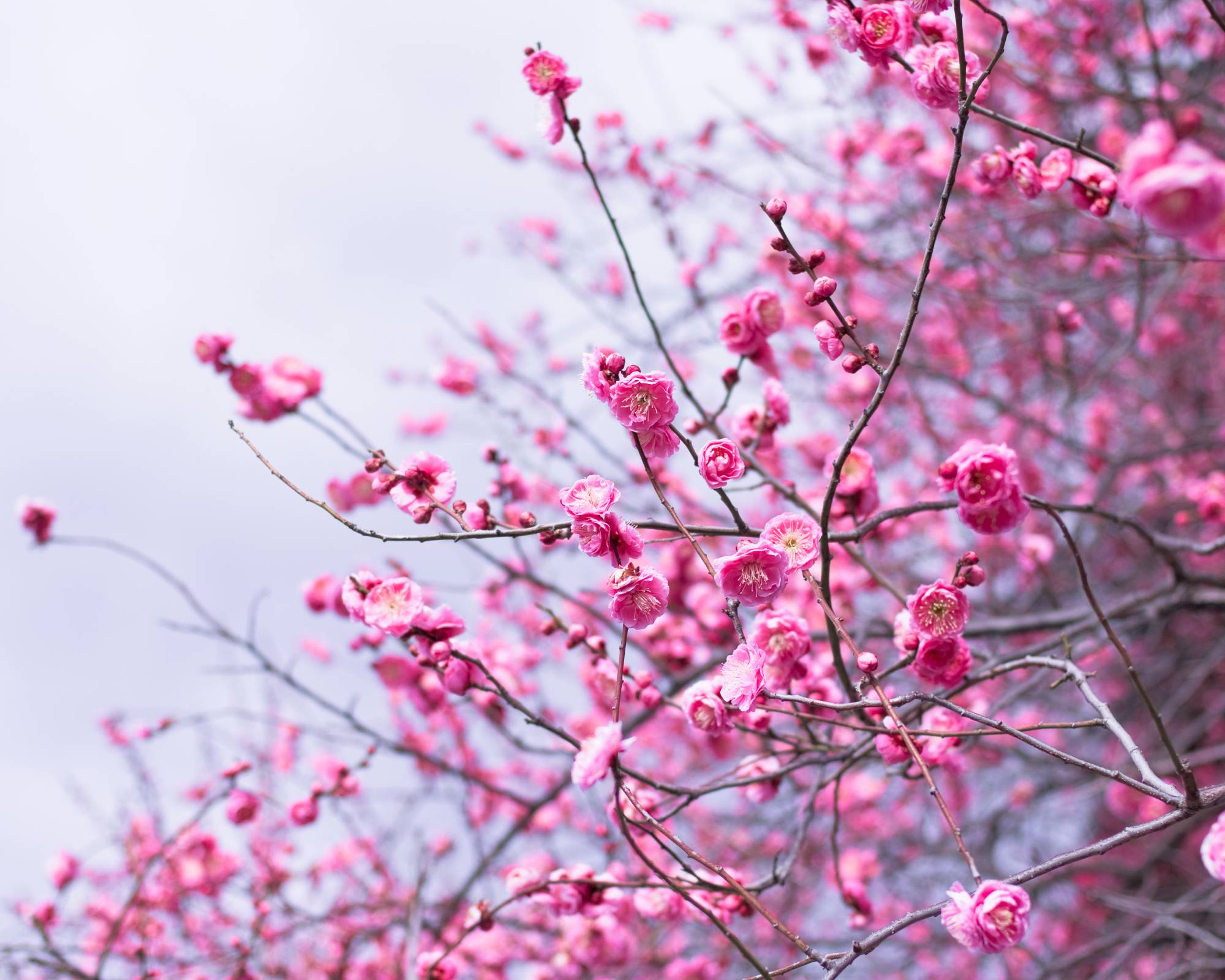
Most apricot varieties neither flower nor fruit in February, but the Japanese flowering apricot (Prunus mume) is the exception. Its showy flowers and dark, shiny leaves will light up the late winter landscape.
Sign up for the Gardening Know How newsletter today and receive a free copy of our e-book "How to Grow Delicious Tomatoes".
While it only offers small, sour apricots – used for jams and teas, not snacking, you can delight in its fragrant blooms in February. The gorgeous flowers – red, white or pink – fill the branches before the tree leafs out.
Find this 'Peggy Clarke' Japanese flowering apricot tree on Etsy from Santiam Nursery.
March: Nectarine Tree
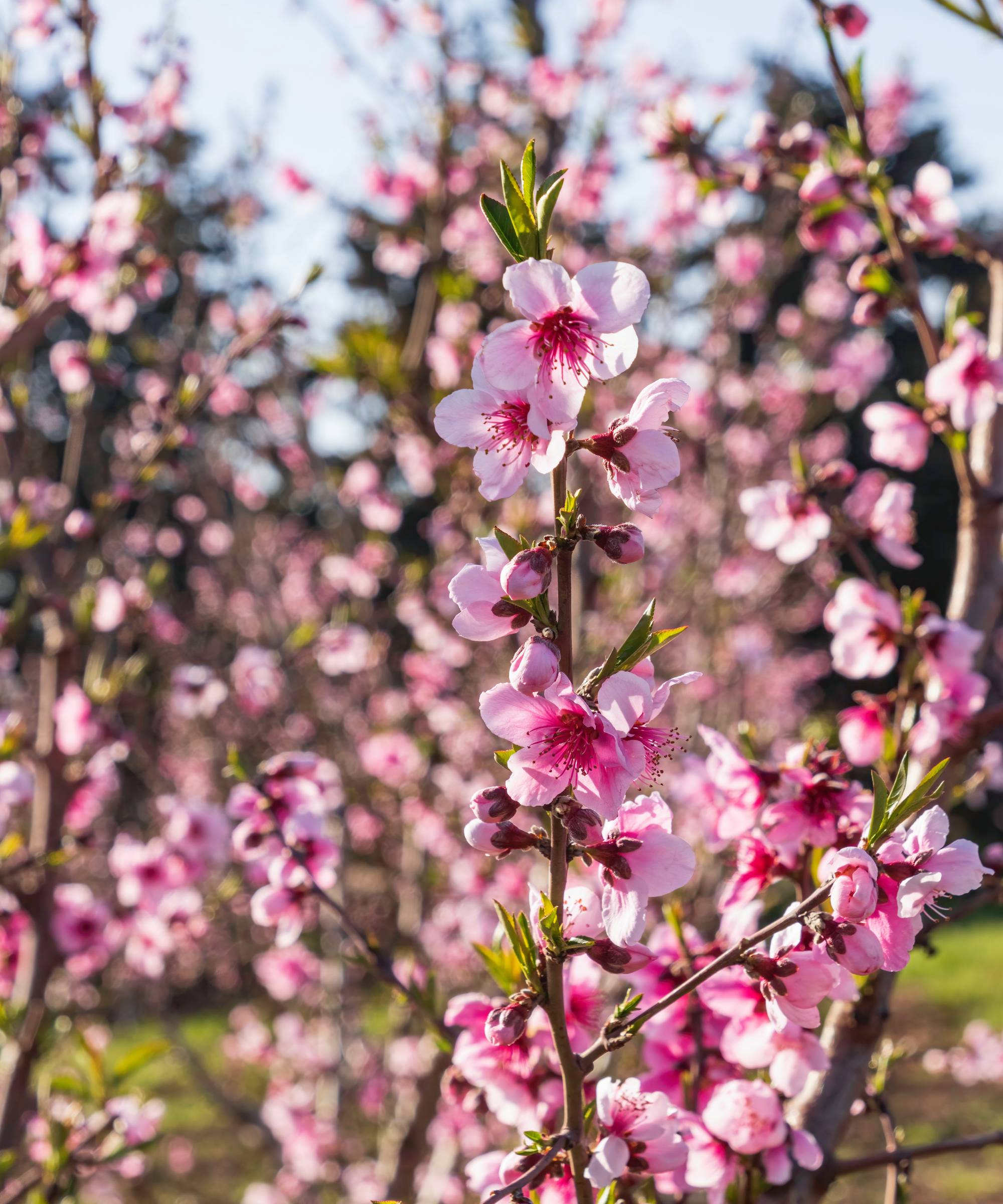
Early blooming nectarine trees (Prunus persica var. nucipersica)– like ‘Desert Delight’ - provide a spectacular show in March. The beautiful pink flowers appear on the tree’s bare branches in USDA zones 7-10. This clingstone cultivar is an excellent choice for a home orchard and requires very little maintenance.
Vigorous and upright, this variety is also a star when it comes to summer nectarines. The fruit is sweet and beautiful, with glowing red skin and golden flesh. It is one of the first nectarines of the season.
Find 'Desert Delight' nectarine trees at Stark Bro's Nursery & Orchards.
April: Cherry Tree
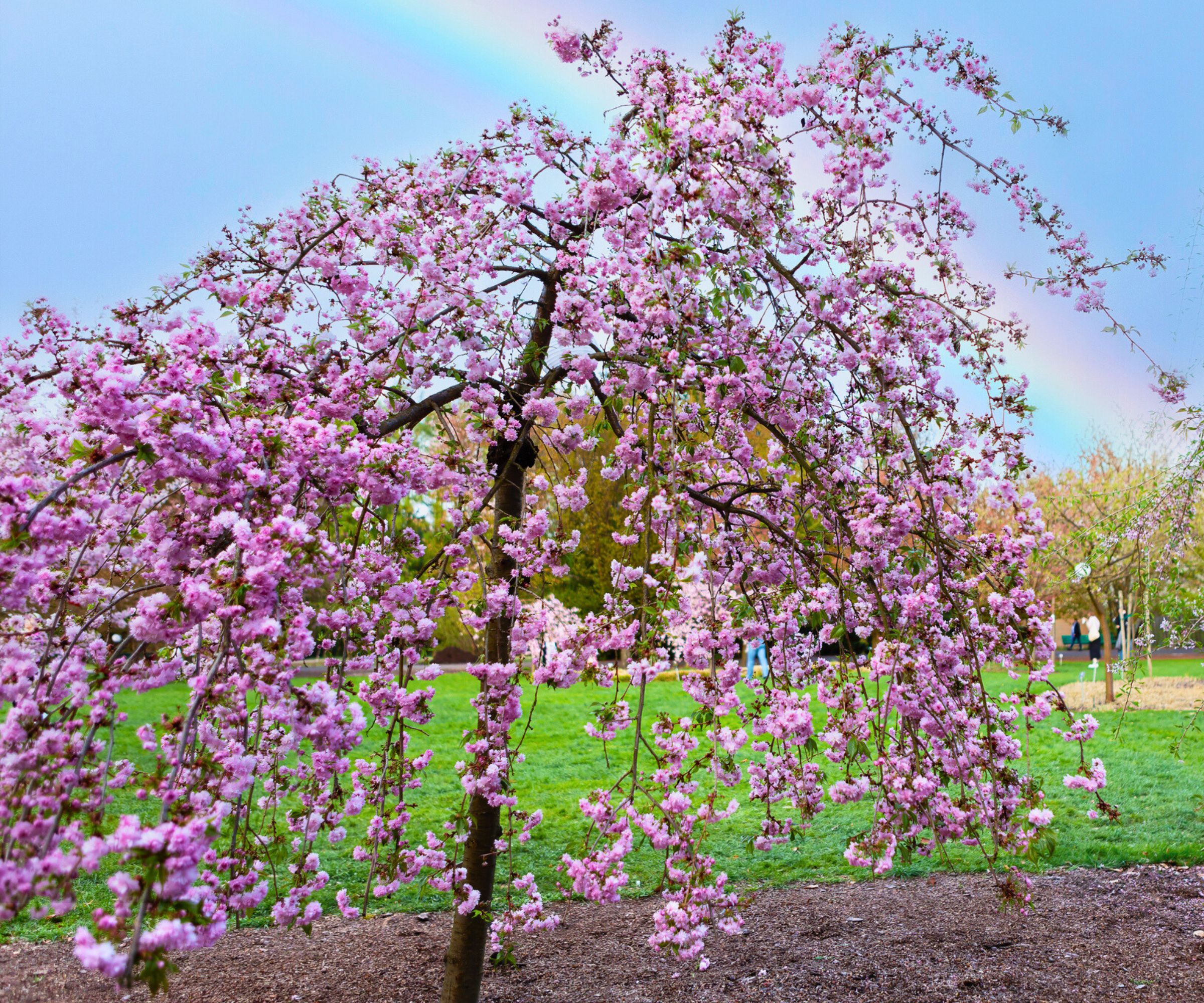
Cherry trees (Prunus spp.) are your best bet for April. While early-bloomers flower in March, mid-season and late-season cherry trees light up your garden in April. These are truly spectacular flowering trees, with showy masses of pink or white blooms.
Top cherry trees varieties that bloom in April include cultivars ‘Yoshino’ and ‘Akebono’. If you want deep pink blossoms, opt for ‘Okame’. Another early-blooming cultivar, 'Accolade', also provides a show in autumn with its fiery foliage.
Find the perfect 'Okame' flowering cherry tree from the Arbor Day Foundation.
May: Apple Tree
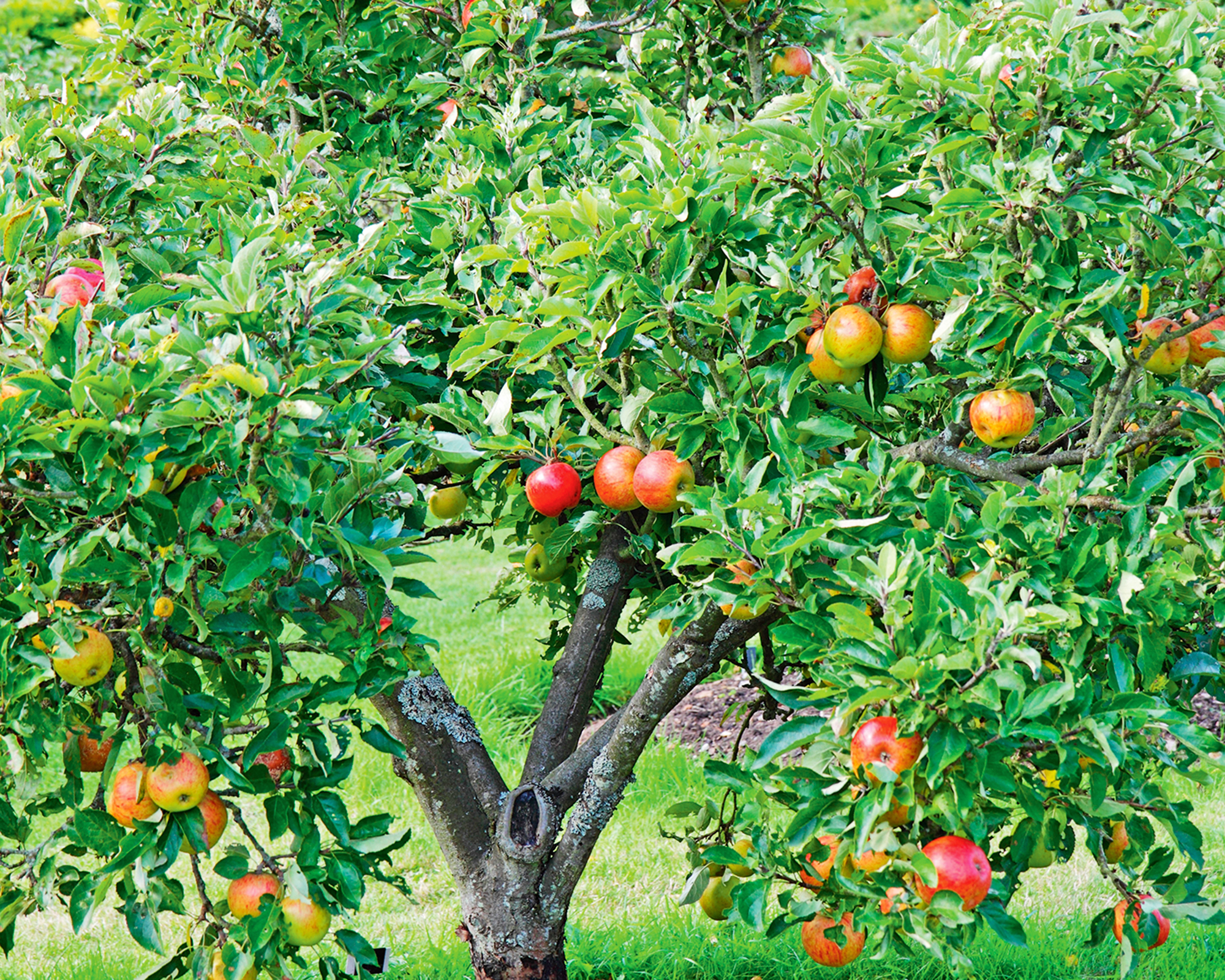
Spring is in full swing in May, and that’s the blooming season for many apple trees (Malus domestica). The apple blossom season is short but lovely, with frothy blossoms covering the branches. Exact bloom time will vary among species, climates, and weather.
Tiny young apples appear on the branches as the flowers die back. The fruits grow larger during summer and are ready for harvest in late fall or winter.
If you want to ensure healthy fruit from your apple tree, you need to plant a different variety alongside it. They require cross pollination to fruit successfully. Find an awesome selection of apple trees from Stark Bro's Nursery & Orchard and choose your two favorite varieties for a delicious harvest!
June: Peach Tree
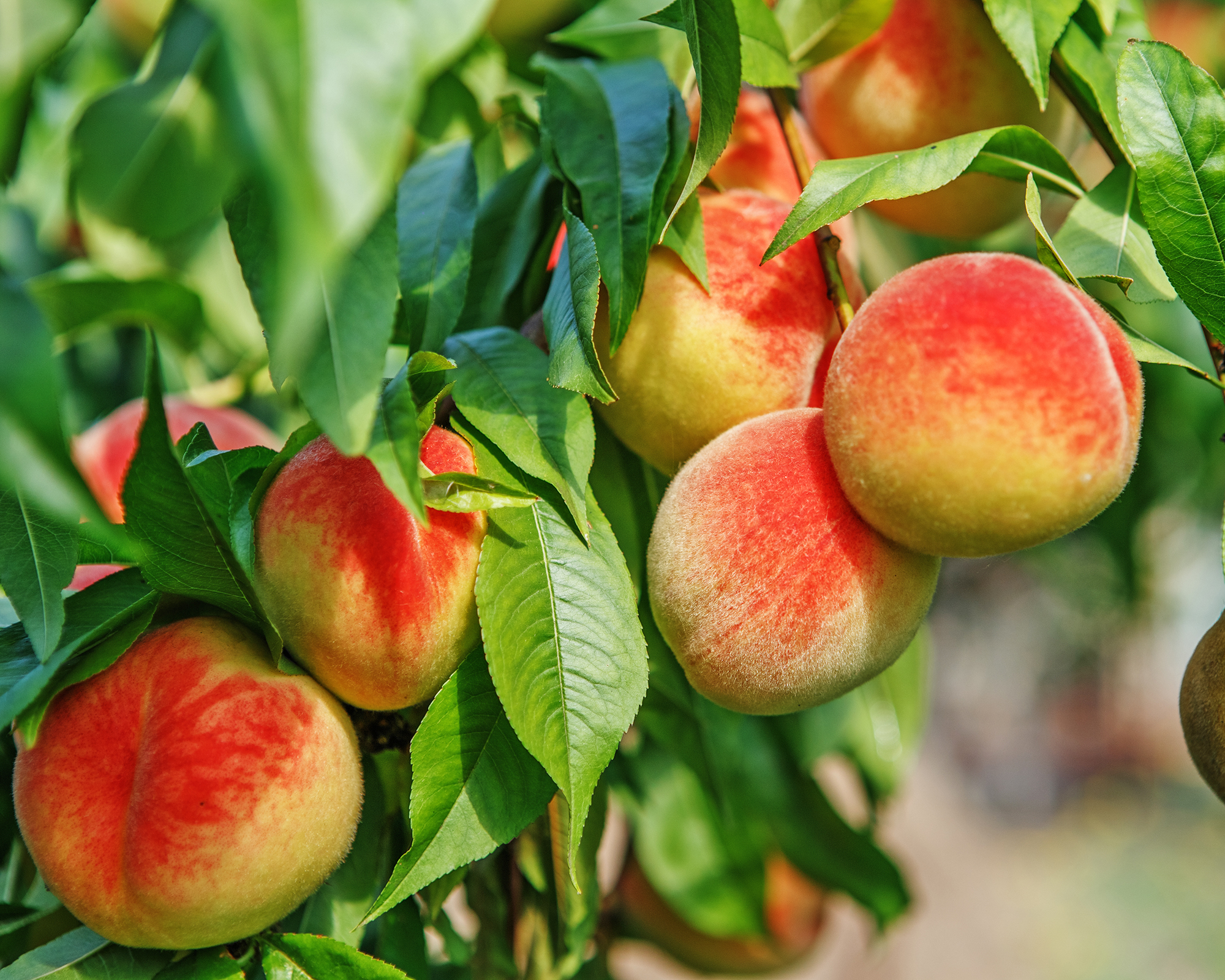
While many peach trees are just setting fruit in June, some early growing peach varieties are already rocking and rolling.
The ‘June Gold’ peach tree (Prunus persica ‘June Gold’) only needs 450 chill hours to produce fruit, so by June, home-grown peaches are on the table. With this freestone peach tree, you can celebrate your birthday with a generous harvest of full-sized, scrumptious peaches.
Get a hardy potted 'June Gold' peach tree from the Arbor Day Foundation.
July: Asian Pear Tree
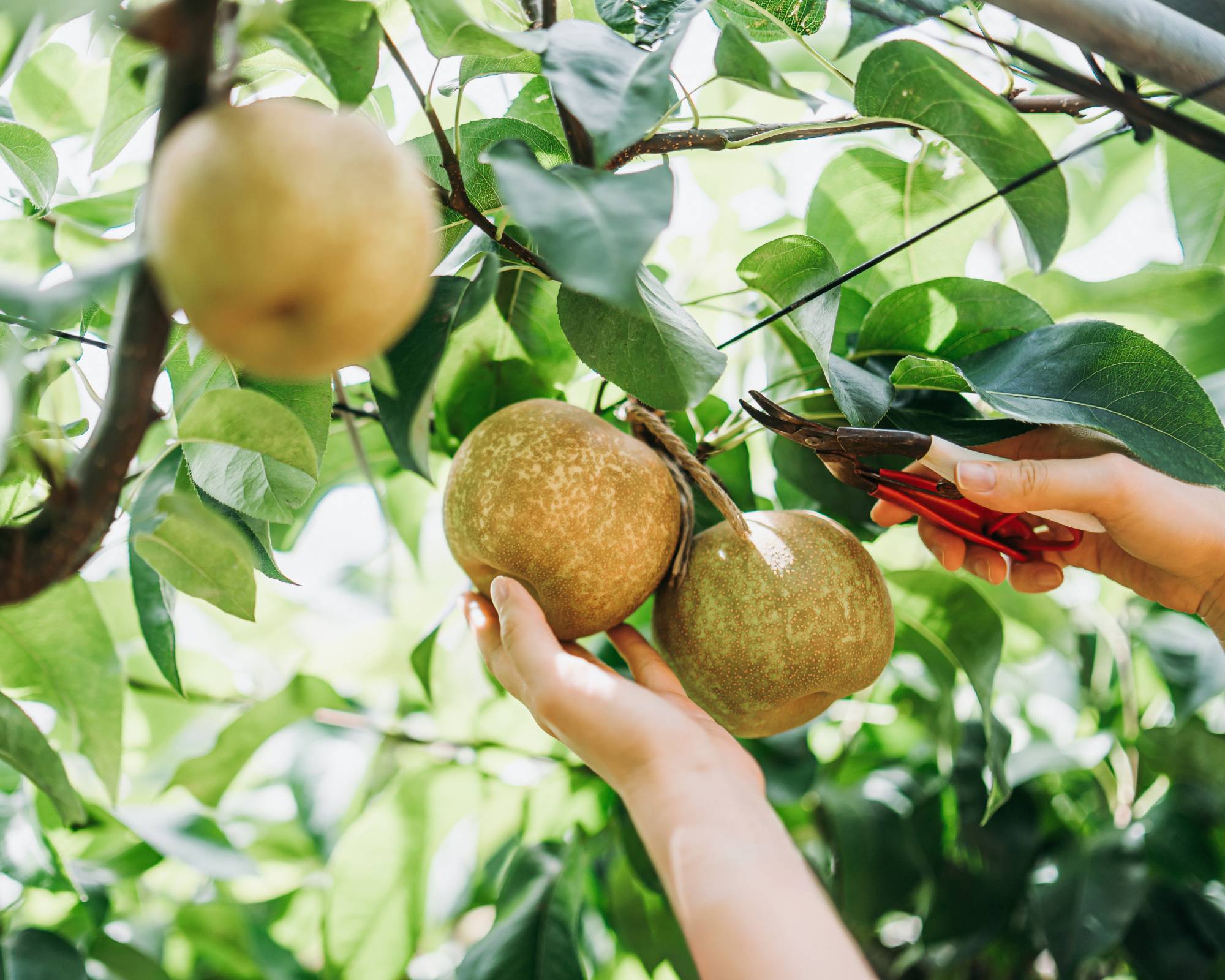
An Asian pear is a crisp, sweet fruit native to China, Korea, and Japan. Despite the name, the fruit’s texture is crisp like an apple, not soft like a European pear. In the United States, Asian pears are ready for eating in July.
The Asian pear tree (Pyrus pyrifolia) is small enough to fit into a backyard, topping out at 20 feet (6m) tall. In early spring, it produces fragrant white flowers, followed by the delicious fruit. Note that most varieties are not self-fertile, so you may need two to get fruit.
Find the 'Hosui' Asian pear tree and 'Shinseiki' Asian pear tree at Fast Growing Trees and you will have delicious fruit in no time!
August: Fig Tree
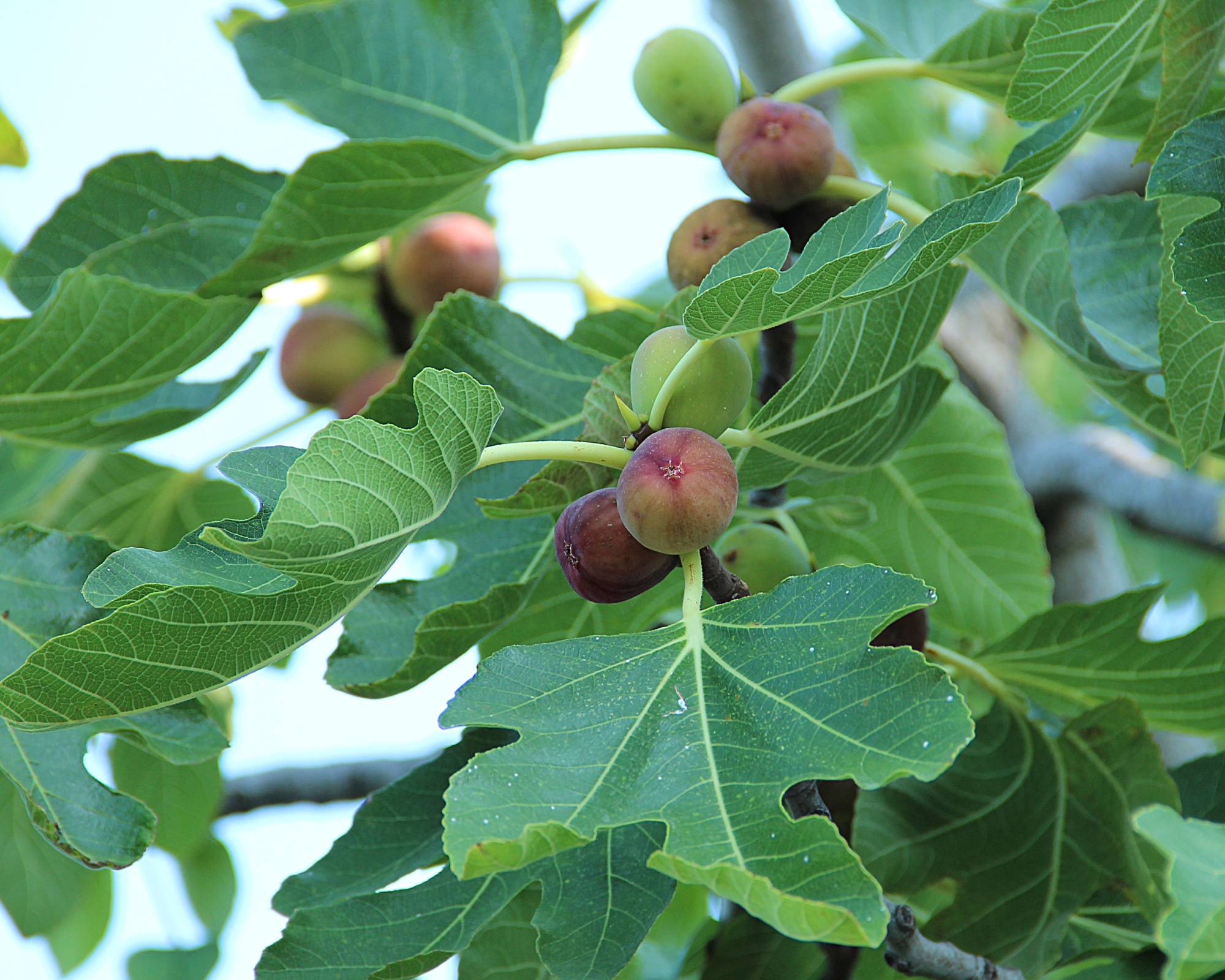
Fig trees are as easy to grow as a fruit tree can be and come in a range of sizes, from dwarf to tall. All offer the sweet fruit that is delicious to eat and also packed with fiber and vitamins.
The fig tree harvest begins in August, so that makes it a perfect birthday tree. These trees thrive in zones 5-11. (Did you know that many fig trees rely on the teeny tiny fig wasp to pollinate them? Too cool!)
Find the self-fertile 'Chicago Hardy' fig tree from Fast Growing Trees for a cold-hardy super producer.
September: Pawpaw Tree
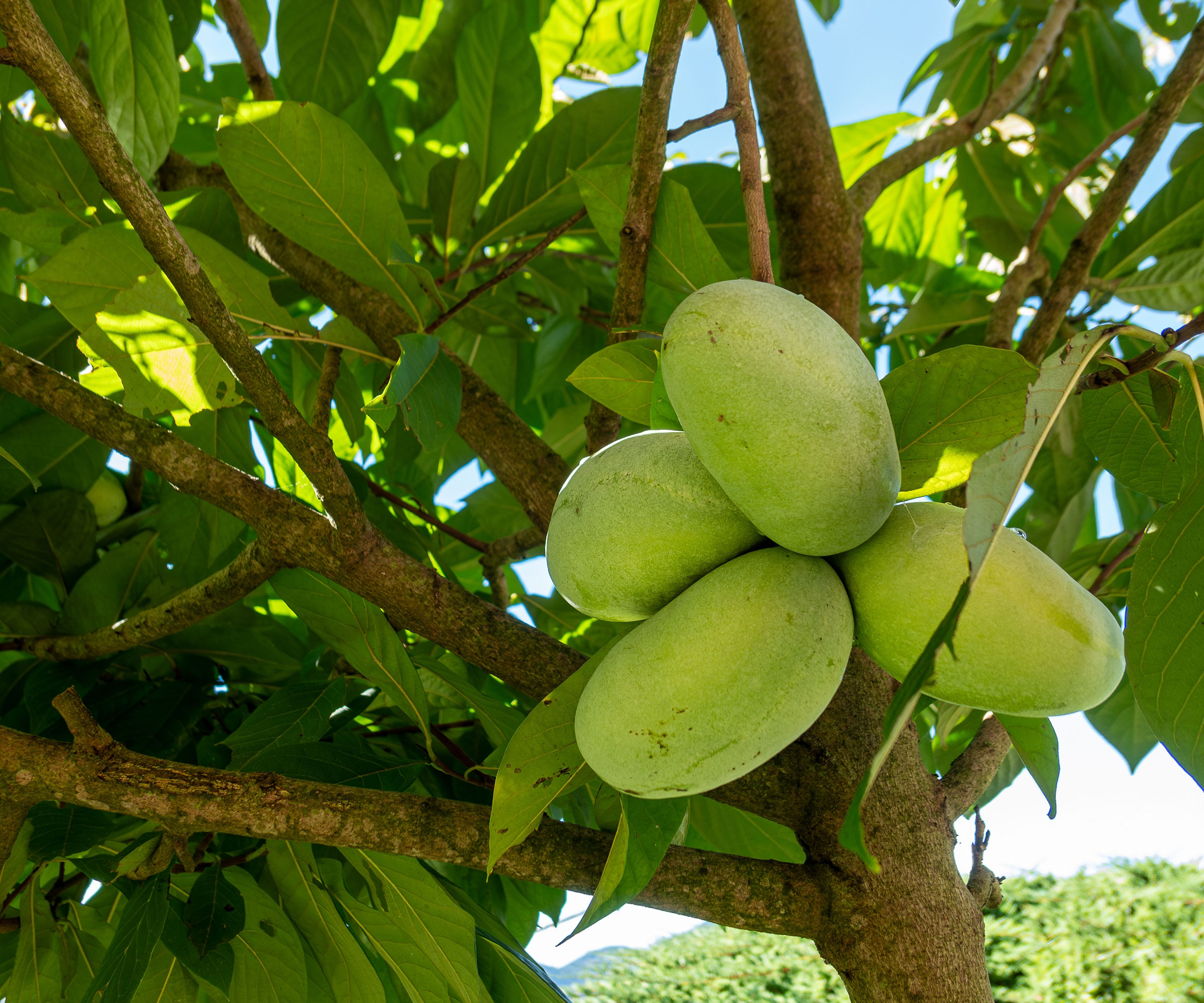
Pawpaw trees (Asimina triloba) are native to North America, and the pawpaw is America’s largest native fruit. It has a curious, custardy flavor that seems to combine the tastes of bananas, mangoes, and pineapples. You can even make a delicious pawpaw pie!
The fruit is rarely offered in stores since it is extremely perishable, so the best way to enjoy it is to plant pawpaw trees in your yard. And what a great birthday tree! The pawpaw tree is small but has a lush, tropical look thanks to its huge green leaves.
Pawpaws ripen and begin dropping from the tree in September. The trees' large leaves shade the developing fruit. You will need at least two trees to get fruit.
Find an American pawpaw tree at Fast Growing Trees to up your native gardening game.
October: Pomegranate Tree
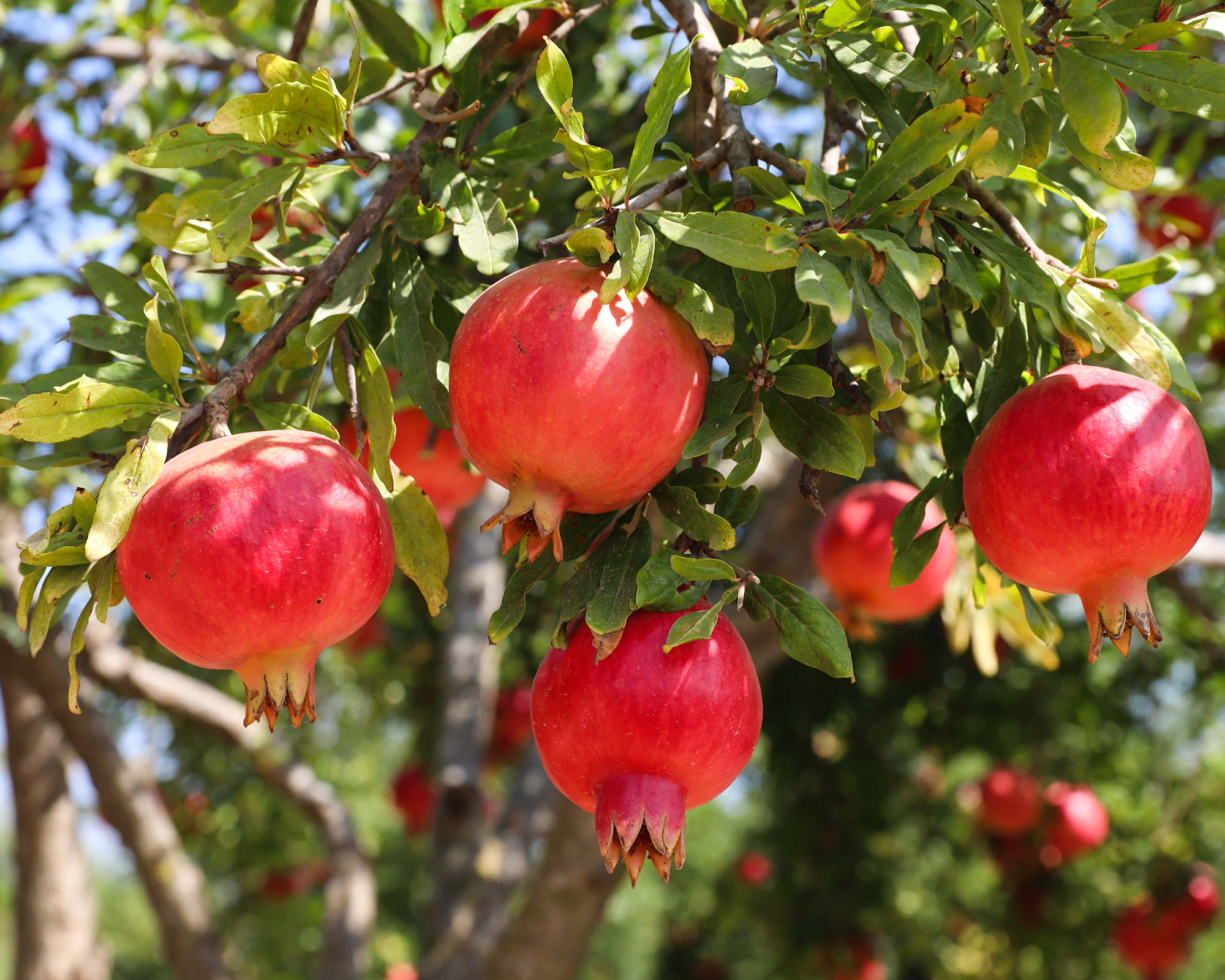
A pomegranate tree (Punica granatum) is very appealing. It bears shiny leaves and scarlet red, trumpet-shaped spring flowers that attract hummingbirds. The round red pomegranate fruits appear after flowering and ripen in the fall. Consider them your October birthday gift!
The leathery skin peels back to reveal sweet, edible seeds. And they are not just delicious, but also good for you, with antioxidants, Vitamin C, and fiber. In its native range in the Middle East, pomegranate trees signify abundance.
Find a cold hardy 'Russian' pomegranate tree from Perfect Plants Nursery.
November: American Persimmon Tree
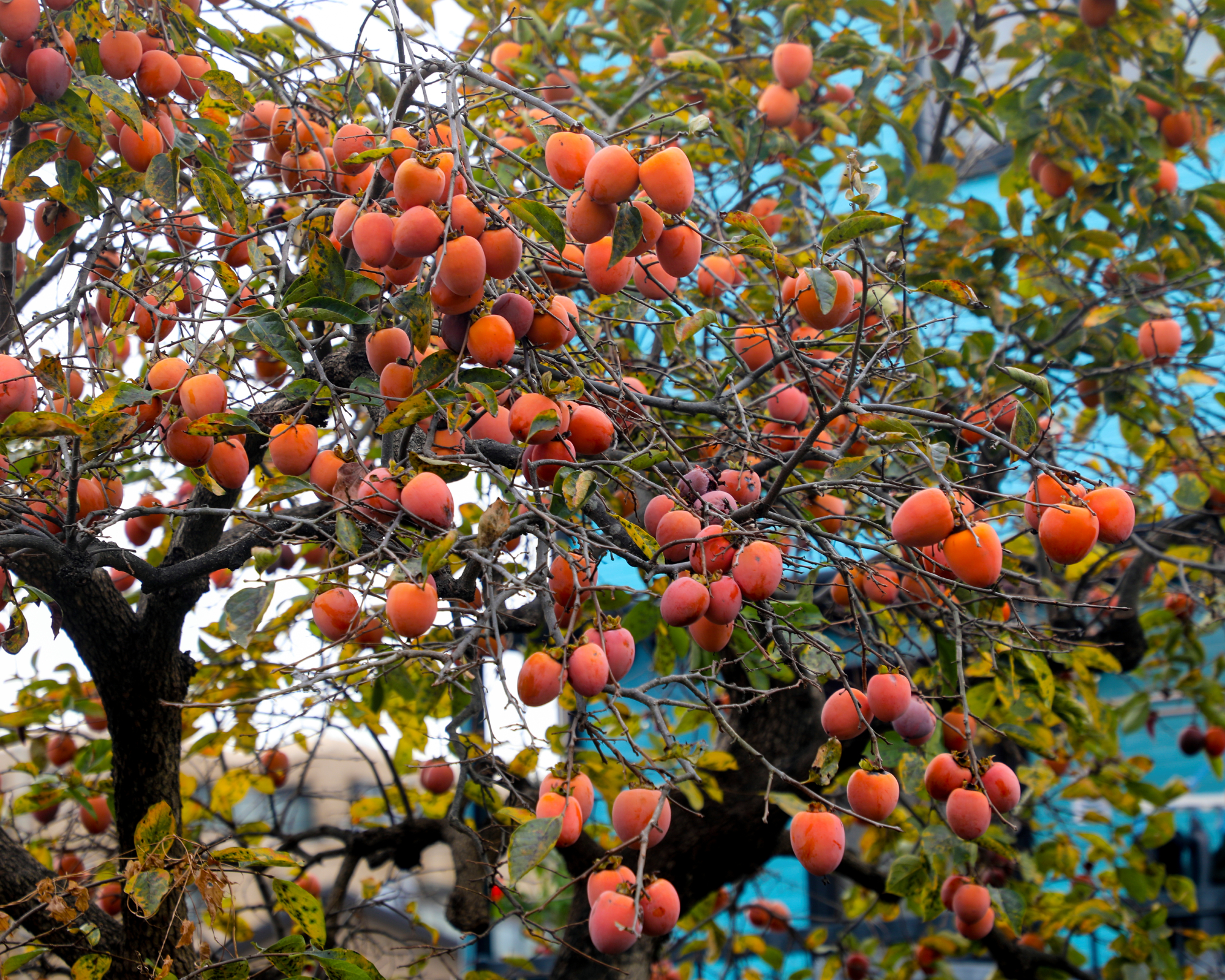
American persimmon trees (Diospyros virginiana) are impressive in any landscape. The trunks are rugged and interesting with textured “alligator” bark. The lush green leaves blaze yellow in autumn. Best of all, the bright and delicious fruit that appear in fall and ripen after the first frost. Persimmon fruits are orange, big as baseballs and sweeter than honey when fully ripe.
This tree is an easy-care native that is perfect for an edible food forest garden. It accepts any well-drained soil, full sun or partial shade, and tolerates hot, dry conditions, poor soils, urban conditions, and wind in USDA zones 4-9. Only female trees bear fruit, and you’ll need a male tree in the neighborhood.
Find the 'Yates' American persimmon tree from Stark Bro's Nursery & Orchard. It is self-pollinating and a fast grower.
December: Orange Tree
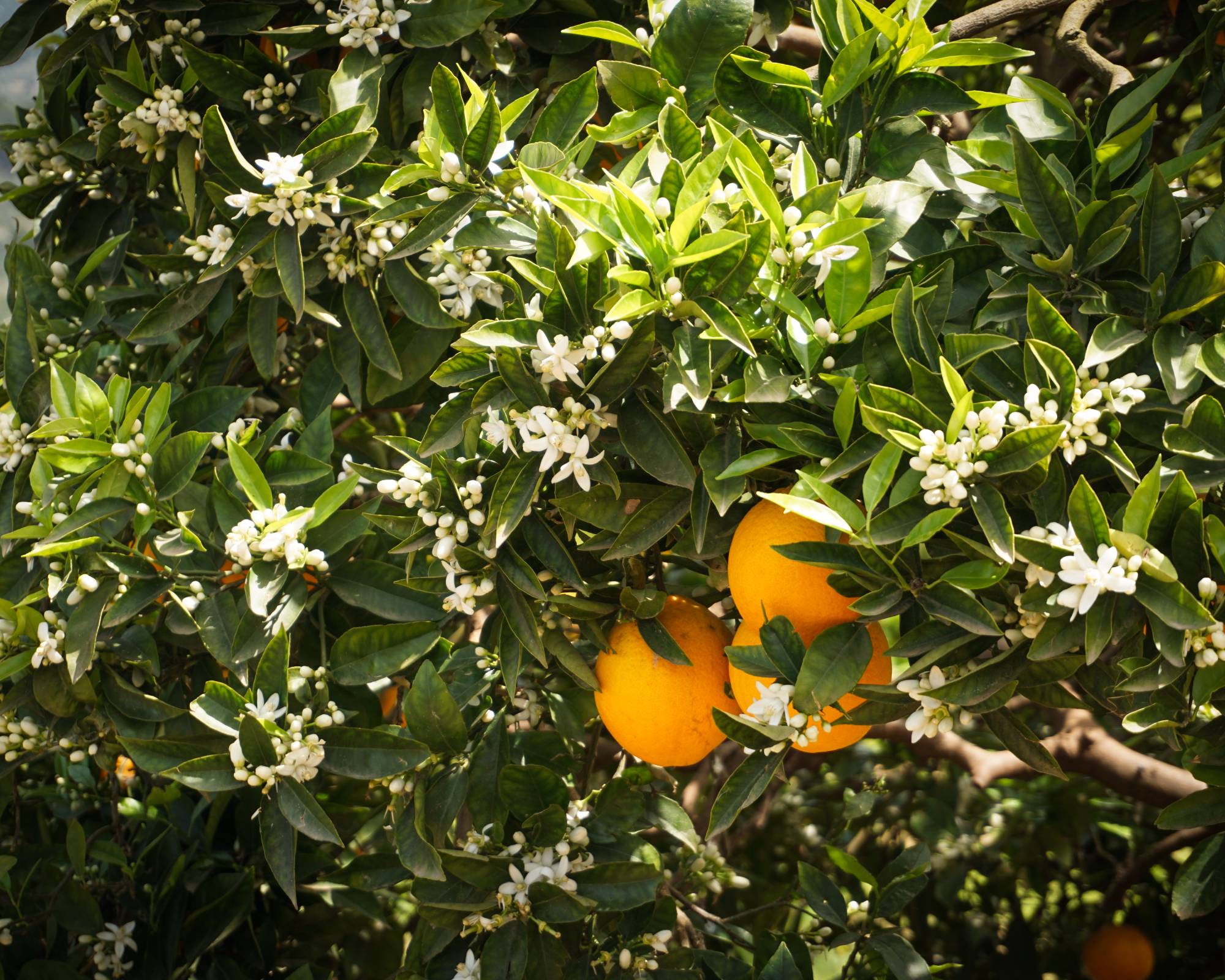
Most orange trees (Citrus × sinensis) will be hanging heavy with fruit in December. They are subtropical citrus trees grown for their Vitamin-C-rich fruit in warm climates, like USDA zones 9-11. You can opt for dwarf or semi-dwarf if the regular trees are too tall.
Orange trees are evergreen, so their attractive foliage lasts all year round. The fruit tree needs lots of sun to fruit. It also requires well-draining soil, as well as ample irrigation.
Find delicious 'Cara cara' orange trees at Fast Growing Trees which you can grow in cooler zones as a part of a container orchard!
Growing "birth month trees" is a fun way to expand your garden and I hope this list has inspired you to grow a lovely fruit tree of your own!

Teo Spengler is a master gardener and a docent at the San Francisco Botanical Garden, where she hosts public tours. She has studied horticulture and written about nature, trees, plants, and gardening for more than two decades, following a career as an attorney and legal writer. Her extended family includes some 30 houseplants and hundreds of outdoor plants, including 250 trees, which are her main passion. Spengler currently splits her life between San Francisco and the French Basque Country, though she was raised in Alaska, giving her experience of gardening in a range of climates.